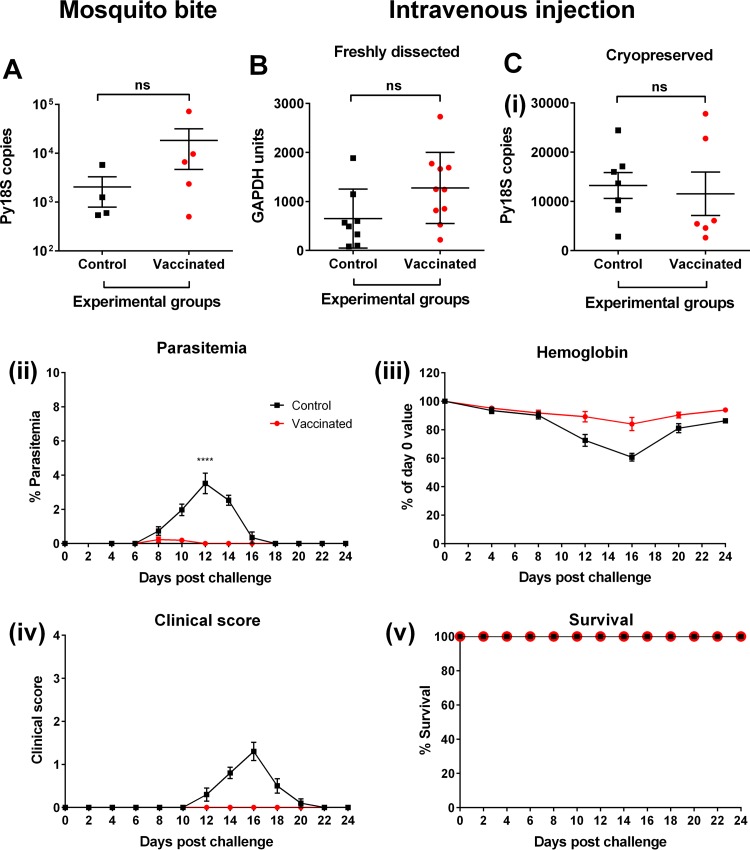FIG 7.
Assessing vaccine-induced stage-specific protection. (A to C) Parasite burden, as assessed by RT-qPCR in the livers of BALB/c mice that received four doses of 106 chemically treated nRBCs (control; n = 4) or P. yoelii 17X pRBCs (vaccinated; n = 5) prior to challenge with ∼10 bites from P. yoelii 17X-infected mosquitoes (A), that received four doses of 106 chemically treated nRBCs (control; n = 8) or P. yoelii 17X pRBCs (vaccinated; n = 10) prior to challenge with 2,000 freshly dissected P. yoelii 17X sporozoites (B), that received three doses of 106 chemically treated nRBCs (control; n = 7) or P. yoelii 17X pRBCs (vaccinated; n = 6) prior to intravenous challenge with 4,000 cryopreserved P. yoelii 17X sporozoites (Ci). Error bars represent the SEM for each group. Depending on the variation in the level of the GAPDH housekeeping gene between samples, the parasite burden in the liver was expressed as Py18S copies or normalized and expressed as GAPDH units. (Cii to v) Assessment of parasitemia (Cii), hemoglobin levels (Ciii), clinical scores (Civ), and survival (Cv) in BALB/c mice that received three doses of 106 chemically treated nRBCs or P. yoelii 17X pRBCs prior to intravenous challenge with 4,000 cryopreserved P. yoelii 17X sporozoites. Each group contained ten mice, and error bars represent the SEM for each group. The peak parasitemia was significantly lower for vaccinated mice than for control mice (****, P < 0.0001). Data were analyzed using an unpaired, two-tailed t test.

